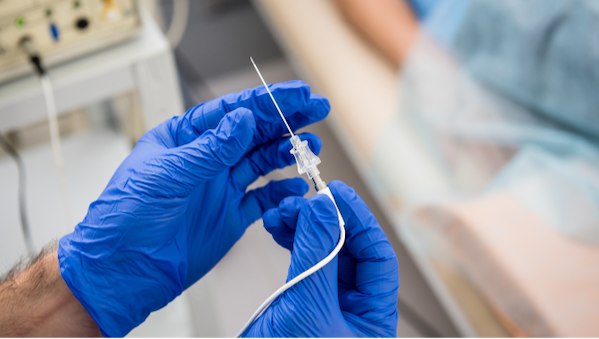FDA Approves Two of Scientia Vascular’s Neurovascular Catheters
May 9, 2024
Source: drugdu
 281
281
Don Tracy, Associate Editor
The catheters approved by the FDA include the Plato 17, a DMSO-compatible microcatheter, and the Socrates 38, an aspiration catheter specifically designed for treating ischemic strokes.
 Scientia Vascular announced that the FDA has approved two of its neurovascular catheters. According to the company, the Plato 17 microcatheter offers physicians the ability to control and stabilize neurovascular applications and is also DMSO compatible. The Socrates 38, which is currently in a limited market release, is an aspiration catheter for treating ischemic strokes. Scientia stated that the approvals mark a significant advancement in its medical technology portfolio.1
Scientia Vascular announced that the FDA has approved two of its neurovascular catheters. According to the company, the Plato 17 microcatheter offers physicians the ability to control and stabilize neurovascular applications and is also DMSO compatible. The Socrates 38, which is currently in a limited market release, is an aspiration catheter for treating ischemic strokes. Scientia stated that the approvals mark a significant advancement in its medical technology portfolio.1
"Our FDA clearance is a significant milestone for Scientia Vascular. By applying proven microfabrication technology to catheters and designing our access and treatment devices for efficiency when used together, we're providing physicians the next generation of neurovascular access tools." said John Lippert, CEO, Scientia Vascular, in a press release. "I am immensely grateful to our dedicated teams whose tireless efforts have made this FDA clearance milestone possible. Their commitment to excellence and innovation continues to drive our patient mission forward."
In February, Scientia Vascular announced that Paul Fischer would be taking over as its chief commercial officer during a time the company considered to be highly successful.2
"We've seen what microfabrication can do in products like our Aristotle 24 and Colossus wires in changing the standard of care for patient treatment in stroke, so it's rewarding to see the excitement and buzz surrounding microfabricated technology in catheters with our physician community," said Fischer, in the press release. "We are eager to see how these advanced technologies will enhance patient care and offer new possibilities for physicians treating a variety of neurovascular disease states."
According to Precedence Research, the market for neurovascular catheters is expected to reach approximately $11 billion by 2033, previously evaluated at over $5 billion last year. The company credits this to the increasing occurrences of neurological disorders, which in turn increases the demand for medical devices, such as microcatheters. Additionally, a study by the company suggests that the growing market is also a result of catheters being utilized for neurovascular conditions, such as cerebral aneurysms and ischemic stroke.
According to researchers, the frequency of neurovascular diseases in the United States is a major player when it comes to neurovascular catheters, which work to guide interventional devices for neurovascular therapy, addressing lesions or procedural sites through percutaneous intravascular procedures within the neurovasculature.3
“The neurovascular catheters market is experiencing rapid growth due to their pivotal role in treating conditions affecting blood vessels within the brain through minimally invasive procedures,” reports Precedence Research. “These catheters are inserted via femoral or brachial arteries and manually navigated to deliver treatment to the brain, eliminating the need for invasive skull and brain tissue incisions. However, challenges arise from the reduction of blood vessel diameter and increased tortuosity in deep brain vessels, limiting procedure effectiveness. Despite these challenges, neurovascular catheters have revolutionized patient treatment worldwide, advancing healthcare in this critical field.”
Read more on
- Jinghong Medical Secures Series A Strategic Financing, Co-led by Venture Capital and Binhu Industrial Group with FTEC Capital as Exclusive Financial Advisor December 29, 2025
- Brazil to launch single-dose dengue vaccination program; Chinese companies help boost vaccine production capacity December 29, 2025
- China Biopharmaceutical’s innovative drug TQH3906 completes Phase II clinical trial. December 29, 2025
- Transcenta Group-B and EirGenix Reach Biopharmaceutical Manufacturing Collaboration Agreement December 29, 2025
- Sinovac Biotech’s adsorbent tetanus vaccine officially launched December 29, 2025
your submission has already been received.
OK
Subscribe
Please enter a valid Email address!
Submit
The most relevant industry news & insight will be sent to you every two weeks.



